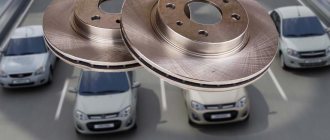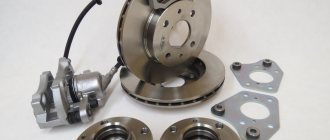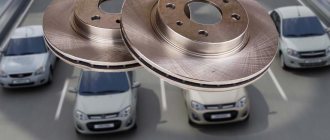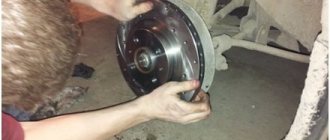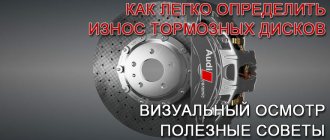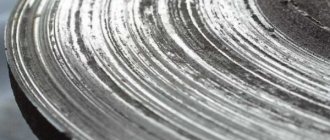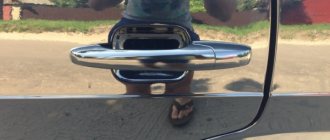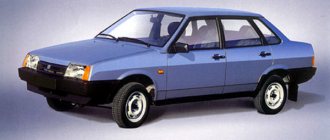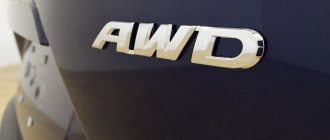Pros and cons of different brake disc designs
Everyone has wondered what's so great about vented discs or what's the benefit of rotors with holes drilled into them? Let us explain everything...
We all know the basic function and working principle of disc brakes. The caliper pushes one or more pads against the rotor, causing friction and slowing down the rotation of the shaft to which the brake rotor is attached. But despite the fact that the operation of all braking systems is built on this single principle, the parts used to operate can vary significantly over time and depending on the use of the vehicle.
The material of the brake pads may vary, there are many types of calipers - some for road cars, others for sports cars, others for hypercars, and so on. Even the brake discs can be different.
So, the topic of today’s conversation will be the types and classification of brake discs, as well as their differences:
Defects and malfunctions
The main defects of brake discs are their thermal deformation, which occurs as a result of a sharp temperature change. For example, when cold water or snow hits the floor of discs that are hot from several consecutive braking, this can lead to their warping and the need for repair. Also, cracks, chips and uneven wear may appear on the working surface of the discs, which is caused by mechanical damage or operation of the car with worn out pads. You can carry out all the necessary repair work to replace such disks yourself, or by contacting a service center, where they will tell you what the minimum thickness is acceptable and carry out the necessary repairs.
Solid (non-ventilated brake disc)
The simplest type of rotor you can buy. As the name suggests, the part is made from a single piece of metal. Typically, cast iron is used as the material. Nothing remarkable - a simple design consisting of a homogeneous rotor and a central part of the disk. Cheap to produce, inexpensive to buy. There's nothing seriously wrong with these rims, they're just designed to be installed on older, low-powered, slow-moving cars. They heat up quickly and dissipate heat slowly. That is, not as effective as the following drives on our list that we would like to pay attention to:
Problems of wrong choice
It is important to draw the attention of every driver to the fact that when choosing a disk, he should not focus only on its price, but also on quality, because the safety of him and his passengers depends on this. If the choice is made incorrectly, this will lead to the following consequences:
- Waste of money and time. The reason is hidden in the wrong choice of pad for a particular type of machine: the wrong choice lies in the incorrect geometric proportions of the part or the wrong selection of mounting fasteners, which in turn leads to additional financial expenses and time for correcting errors.
- Severely worn brake system. This occurs when the pads are of better quality than the brake disc. This leads to malfunctions in the steering part and the appearance of grooves in the discs.
Ventilated disc
Probably the most popular type of disc used on modern cars. Its design consists of two parts of rotors with cooling channels placed between them. A clever circuit, hidden from view, allows heat to dissipate, preventing the disc from overheating, cracking, twisting and increasing pad life.
Originally characterized by straight channels, vented discs have evolved over the years to improve airflow. In the image above you can see the changes to the brake discs from Brembo: straight channels, curved channels and three different more complex patterns, with more efficient air flow distribution.
SCHNEIDER
Products for the braking system of German brands of racing cars. Brake discs are designed for drivers who like to drive at high speeds.
Composed of a ventilation and perforation system, this significantly reduces the impact of temperature changes during movement and their friction, and also removes unnecessary gases that form in the friction area of discs and pads.
A characteristic feature of SCHNEIDER discs is their ribbed structure for an optimal air flow path.
Advantages:
- air flow in one direction;
- the ability to quickly accelerate the car;
- lifetime;
- exposure in an aggressive environment.
The product also has disadvantages:
- discs accelerate wear of brake pads;
- When driving around the city, it is impossible to fully exploit the capabilities of the braking system.
The cost is set at 3,700 rubles.
Drilled discs
BMW M2 with drilled rims (left) opposite the M240i sport flat vented models
When brake pads are used under heavy load, gases begin to escape from them due to heating and solid particles fly everywhere - dust that adheres to the disc rotor. A thin layer is formed that impairs the adhesion of the pad to the disc during operation, causing braking efficiency to decrease. Holes are drilled so that these gases have a place to escape, and abrasive dust comes out along with them. An additional advantage is the reduction in weight compared to a disc without holes. However, there are also negative aspects to such tuning - the strength of the disc deteriorates - this is the case.
It is also worth considering that the surface of the brake disc is used as a small radiator, therefore, by reducing the area of contact of the metal with the surrounding air, you reduce the quality of cooling.
Additionally, these holes can become stress points that can cause the cast iron to crack under hard braking.
You may have noticed that even on sports cars there are fewer and fewer drilled rims. The reason for this is the improved quality of modern brake pads. With their active use, not as many gases are formed as their predecessors, and therefore the need for “drilling” has decreased.
So, on the road, in normal use, you probably won't encounter such problems, which is why nice hole-punch rims are still occasionally seen on modern sports cars, where they certainly look stunning behind large, alloy rims. Plus, if the disc rotors are factory drilled at the plant, they will be strong enough to definitely avoid cracking.
EBC Brakes
This UK company produces expensive brake discs. The entire presented list of parts is divided into the following categories:
- The main purpose is for Japanese cars that can accelerate to high speeds. Among them are such brands as Subaru, Honda, Infiniti. Products in this category are of very high quality, and therefore their prices are also high. In addition to price and quality, the big advantage of Turbgroove products is their high wear resistance. The discs have notches and perforations.
- This company's automotive products are suitable for use in high-end brands of sports cars.
- Designed for mid-segment and premium car enthusiasts.
The discs have a smooth surface, so it is necessary to use brake pads with them. The service life under various situations and conditions of use of the car is significantly longer than that of other brands.
Slotted disc
These slots on the disk try to solve the same problem with the removal of gases, only in a different way. Slots or grooves on the surface of the disc allow gases to escape in a timely manner, but this design has other advantages.
The scraping edges of the grooves on the surface of the brake pads can clear dirt from the brake surface, also increasing traction when in contact with the edges of the grooves. The downside is definitely the active wear of the pads. And finally, like the drilled discs, they just look really nice.
Groove designs can vary significantly, with one of the most distinctive grooves being the “J”-shaped hooks (pictured above), which are designed to do the same particulate removal and gas evacuation, but with minimal disc vibration during braking. At the same time, they look even better.
How not to run into a fake
At the moment there are many fakes of original products. Counterfeits can also be found for expensive products from well-known world brands and for products in the middle and even economy segments. To minimize the purchase of pirated goods, you need to listen to several tips on this matter:
- Make purchases only in trusted and reliable stores, which primarily value their reputation. It is best to avoid shopping in dubious stores, despite the beautiful advertising.
- Before purchasing a disc, you must carefully inspect its surfaces.
- If the disc is original, it doesn’t matter what the price is set for it, it has markings from the factory. As a rule, it is embossed or engraved on its non-working surface. If it is not there, then it is a fake.
- Expensive wheels have a mark and serial number from the manufacturer. Their originality can be checked in the manufacturer's database using its serial number.
Please note that counterfeit products last significantly less, which can be dangerous for the life of the driver and his passengers while driving.
Dimpled (grooved)
Here's option number three, allowing those pesky gases to escape. The surface drilling of a portion of material from a disc that leaves the structural integrity of the discs intact while still giving gases and abrasives from the pads a place to escape.
Some wheel manufacturers combine grooves with notches. It is difficult to say how much this improves cleaning efficiency. Just another use of technology.
The history of the development of brake mechanisms and the nuances of timely maintenance
Brakes were invented by... no, not cowards - engineers, and not even automobile engineers, but those who were engaged in arranging horse-drawn carriages. With the advent of vehicles with internal combustion engines, brakes gradually transformed, however, having reached a certain level of development, they subsequently progressed in small steps. And now, like more than half a century ago, the system contains a booster, hydraulics with cylinders and lines, as well as direct working mechanisms - discs and pads. It seems that everything has been studied literally under a microscope and is extremely simple. How to say…
Tires as a determining factor
Yes, there were brakes at that time... But what - people accustomed to hard physical labor, presumably, coped well with pads-shoes, manually pressed through a simple lever mechanism to a wooden or rubber-covered wheel rim. The block was also originally made of wood. Later they came to metal, and as a friction material they began to use not the body of the working element itself - a leather lining.
The simplest brake used on carts and carriages. It began to disappear as power and, accordingly, speed increased. And the beginning of the use of cast rubber rims did not contribute to the effectiveness of the brakes. One of the first examples of the progress of braking “systems”. On the left is a Panhard&Levassor from the late 19th century with wooden shoes as brake pads. On the right is a model of the same brand, but from 1901. The pads here are already metal, elegant, in the shape of a sewing machine foot. So are pneumatic tires.
With the advent of Dunlop's invention into the automotive industry, brakes underwent their first transformation - they moved from the wheel rim to separate rotating elements. These are the drums, firmly connected to the hubs or axles. A fabric belt impregnated with various resins was stretched over the drums and compressed them, again using a lever mechanism. It was a very primitive device that required frequent tightening and replacement of the working element. An alternative to a belt was a steel cable that braked a wooden drum. However, even the steel belt that replaced the belt, which added efficiency to the brakes, did not completely solve the service life issue - it corroded and was actively wearing out.
The band brake had one advantage: when the mechanism was clamped, a self-reinforcing effect appeared when the band was tensioned due to the rotation of the drum. There was also a significant disadvantage: when water or snow got between the belt and the drum, the coefficient of friction sharply decreased, and the effectiveness of the brakes decreased
The first mention of “new” type brakes can probably be dated back to 1900-02, when Wilhelm Maybach proposed his vision. Although the usual design with semicircular blocks inside the drum was invented by Louis Renault - between these same years.
The racing Mercedes Simplex 40HP developed by Maybach also had the original brakes of this designer. Braking occurred by pressing a steel ring against the drum. It is unknown whether this design was used, albeit to a limited extent, on other models. One thing is for sure - it is not widely used
The beginning of the 20th century was about. A foot drive and front operating mechanisms appeared, and a mixture of asbestos and phenol-formaldehyde resins began to be used as the friction material of the lining.
The Oldsmobile Curved Dash, introduced in 1901, was the first car to operate the brakes using a pedal rather than a hand-operated poker. True, the working element was the tape. By the way, the four-horsepower Curved Dash weighing 400 kg is challenging the championship of serial production with the Ford Model T
There are different opinions, but it seems to us that the Dutch Spyker 60HP of 1902 was the first car to use brakes on both axles. In this case, at the rear there were drums on each hub, and the front mechanism braked the driveshaft. Interestingly, the Spyker was also the first all-wheel drive car.
Louis Renault came up with something that has survived to this day almost unchanged. Over time, the pads only “overgrown” with friction linings, a second working cylinder (photo on the right) and a self-adjustment mechanism appeared, designed to maintain contact between the drum and the pad as the latter wears out. By the way, until recently, for the sake of economy, they continued to use the only working cylinder for the mechanism
Metals and other materials
Disc brakes - who would have thought - in relation to cars were patented by the Englishman William Lanchester back in 1902. Although they have been known on industrial equipment for centuries since the 19th. They didn’t immediately take root in transport. Having a much smaller contact area of the working surfaces, with deceleration similar to drum brakes, they required much more force on the pedal.
It's safe to say that the 1901 Lanchester 12HP Tonneau was the first car to use disc brakes. They were installed on the rear axle. Among other features, we note the central location of the four-liter “four”
In the 20s, the next key modernization of brake systems took place - a hydraulic drive and a vacuum booster appeared.
The 1921 Duesenberg Model A (left) was the first to commercially receive hydraulic brakes, developed back in 1918 by Malcolm Lockheed. The author of the vacuum amplifier is unknown. But the car that became the debut unit carrier in front of you on the right is the 1928 Pierce-Arrow Model 81. Interestingly, both “Americans” had the same engine size - 4.6 liters. But in the Duesenberg, with four cylinders, it developed up to 100 hp, and the Pierce-Arrow “six” was boosted a quarter less
The hydraulic drive and vacuum unit paved the way for the widespread use of disc brakes. However, this did not happen immediately and not en masse. As mechanisms that generated significantly more heat than drum ones, they were not compatible with the brake fluid of that time, obtained from alcohols and vegetable oils. Having a low boiling point, it led to the appearance of plugs in the system, which sharply reduced the effectiveness of the brakes. The amplifier was simply expensive. A new era of disc mechanisms began in the early 50s, when they were adopted by Jaguar.
Sources of information differ: the first post-war car to use disc brakes is called either the Jaguar XK120 (left) or the Jaguar C-Type. Perhaps both judgments are correct, especially since the second was a racing modification of the first. And yet the XK appeared two years earlier, in 1949. There are also doubts about the exact date - 1952, 1953... But on the 1950 models, discs and calipers can already be seen behind the wheel spokes, while on later versions you can see the drums. The same situation with the ring C-Type. Obviously, experiments were underway, it is possible that new brakes were offered for an additional fee
In the early to mid-60s, the hydraulic system was divided into circuits (diagonal or front/rear). Well, then, if we do not consider electronic assistants, then the brakes have developed in several ways. Let's make a reservation: the drums on the vast majority of models have outlived their usefulness. The pads, which do not provide an even fit at the point of contact, cannot withstand too high pressure (the drum can burst), and finally, are not properly cooled by the incoming air, they remained the prerogative of “state employees,” the now rare SUVs and pickups. That is, those categories of cars where savings on everything are important or their fundamental advantages are good protection from dirt and a longer service life.
The development of disc brakes has moved in three directions. Firstly, the force and uniformity of pressing the pad to the disc increased, for which purpose 2, 4, even 6 or 8 pistons were installed in the calipers. Secondly, to reduce unsprung masses, the working mechanism has become as light as possible. So, now it is no longer uncommon to have composite structures where the disk is made of the usual cast iron, and the hub is made of steel. There are hubs made of aluminum. Moreover, there are designs in which these two metals are connected using “one-piece” metallurgical technology, when one is added to the second during casting. Finally, thirdly, if we talk about GT and especially sports, then we are talking about better thermal stability of the brakes. Carbon and ceramics rule the roost here. The destiny of the first is still more than a race, since it begins to work efficiently from 300 degrees. But ceramics not only tolerate high temperatures well - they have increased wear resistance, do not corrode and are not afraid of temperature changes. But it’s also exorbitantly worth it.
Brakes - service!
All these are “higher spheres”. And although manufacturers are now experimenting with all their might with ceramics as part of the friction material of pads, the average consumer is far from all kinds of know-how. At his service are still cast iron discs (okay, if not Chinese) and pads with different (from 10% to 50% or a little more) metal content in ferodo. The choice comes down to only this, and maintenance only to replacing the pads?
Probably all leading pad manufacturers are experimenting with friction lining materials. For example, TRW offers the COTEC and DTEC series. In the first case, improved contact between the disc and the pad is promised, plus a maximum friction coefficient immediately after replacing the pads, that is, the absence of break-in as such. In the second case, minimal dust emission is added to all the advantages
Andrey Biryukov, spare parts selection manager at MX group, more than five years of experience
— All pads can be divided into three types. Original, or OEM (original equipment manufacturing), - supplied to conveyors. And non-original ones, which, in turn, will be divided into high-quality and low-quality. The buyer, if he moves in normal modes, just needs to name the make, model and year of manufacture of the car, and the seller will already select the pads from the catalog. There is no need to bother yourself with the temperature range in which they operate, and in most cases with the friction material of the linings. By the way, Japanese manufacturers are moving away, in fact, have already moved away from producing ferodo with a high metal content. And non-metallic and ceramic pads are exotic, which I’m sure will not be found in every region.
It is believed that Japanese manufacturers do not offer semi-metallic pads (with a metal content in ferodo of at least 50%) on the aftermarket (left). Unlike European companies. Parts with low (10-30%) metal content (right) have a shorter service life, but do not reduce the service life of the brake disc
So you need to choose based on quality. For OEM components it is high. Probably a little lower or similar for recognized brands that traditionally demonstrate low prices. But something that costs 30%, and especially half as much, must be treated with caution. Moreover, we can say with confidence that Japanese brands, which until recently were distinguished by stable characteristics, having transferred their production from their homeland to Malaysia, Thailand, etc., have lost quality. The cost here is a very good indicator of the level of material (composition) used for the overlay. There are a lot of budget pads on the market, but such savings are questionable. The point is not even in the braking efficiency (although it, of course, cannot be discounted, but it will take a long time to find out) - the fact is that these pads can wear down literally in a week. There were such cases. It also happens that the latest car models come across defective pads - they don’t fit properly, they get stuck. However, this is visible even during installation.
By the way, fake pads, of which there are plenty on sale, can wear out within a day. How to identify them when purchasing? Some use well-known names (say, Nisshinbo), removing a letter or two. We once went through this with the example of clothing and electronics. In any case, you need to inspect the friction material - is it chipping or chipping? In general, if in doubt, it is better to trust a service station - buy and install there. At least you can make a claim.
The fact that this is a fake can be determined by several “clues”. In any case, when buying Ferodo pads, you need to carefully study them. But first of all you need to pay attention to the price
Another sign of fake pads is their squeaking sound. Not when braking - constant. But quite high-quality parts can also creak. However, most aftermarket pads do not come with anti-squeak plates. Sometimes a special lubricant helps, but it is better to use it together with the plates. So you should take care of those on your car.
Why do the pads squeak? In fact, this is a high-frequency vibration of the pad during friction against the disk, which in this case acts as a resonator. This happens due to loose pressure of the pad by the piston (or pistons) to the disc. To eliminate sound, they use plates and a special lubricant (a tube from 800 rubles), which is applied to the back of the pad and the inner surface of the plates, eliminating the gap. For some models, plates can be purchased separately - a set for an axle costs 1000-1500 rubles.
Sergey Trufanov, director, work experience more than 15 years
- Engine, gearbox, suspension - after the main components, the brake system is serviced on a residual basis, often only by changing the pads. Meanwhile, there are nuances associated with it, knowledge of which can minimize costs and even save lives. But first, about something that requires attention only in individual cases.
The vacuum booster, or more precisely, its main working element - the membrane - fails (shries out) only on very “old” cars. Serves on cars from the 90s, even the 80s. The brake force distributor does not cause problems. Defects or poor quality are found only on domestic cars. The brake hoses also have a good service life. However, they need to be monitored. I remember a case where a person dropped into our service to literally “top up the cooler.” When we raised the car on a lift (to see where the antifreeze was flowing from), a bulge was discovered on one of the hoses - after several intense braking, depressurization threatened. Temperature changes and generally low temperatures shorten their service life, and I don’t recommend installing Chinese hoses - they don’t last long and are unpredictable in principle. One advantage is the price, about 500 rubles. High-quality non-original ones cost twice as much, and the “original” reaches up to two thousand.
How to distinguish bad Chinese hoses from quality ones? The question is complex. It's all about the rubber composition of the outer shell and the inner hose, which must be resistant to chemicals. And also in the intermediate reinforced layer, which must withstand pressure. Chinese products often fail in both cases
Don't forget about brake fluid. According to the car manufacturers' regulations, the frequency of its replacement varies greatly depending on the mileage - from 40 to 90 thousand km. We prefer to use a refractometer, which measures the percentage of moisture in a liquid. And if this value is 1.5, and even more so 3, we change it. The cost is low - about 1000 rubles. along with work.
You must use the parking brake! This condition will prevent wear of the pads, stretching of the cable (they forgot to remove it and drove off) and its souring. In addition, it will protect the automatic transmission from unnecessary loads when parking downhill (here you need to tighten the handbrake before parking).
If we talk about working mechanisms, then replacing the pads is just the end of the brake system maintenance process. Before this, or rather, along with this, you need to check the caliper guides. This is especially true for SUVs, although this should also be done on passenger cars. Due to torn anthers, water and dirt get into the seats, and the guides jam. The pads do not press properly against the caliper, wear unevenly, and braking performance can be significantly reduced. It is important to understand that not just any lubricant will do (litol, etc., on the contrary, will make dismantling very difficult) - a special high-temperature one for guide supports. It is also necessary to lubricate all threaded connections that are, on the one hand, under the influence of temperature, and on the other, in a damp and dirty environment.
Sometimes, lubricant for guide calipers is included with them. Often you have to look for it separately, which can be difficult. You cannot use various graphite or molybdenum lubricants - they are not designed for high temperatures In the absence of maintenance and in an environment where reagents are used, it is possible to bring the brakes to a state in which a comprehensive revision and replacement of many elements will be requiredIt's better not to skimp on pads. I think it's obvious. Another thing is that on new models both they and the wheels correspond to the general trend of car creation - they don’t “run” for long. On a new car, the pads can last about 25-30 thousand km (the recorded anti-record is 12 thousand km on the Lexus LX570). And at the second replacement, that is, at 50-60 thousand, the disks also need to be changed. There are even blatant examples when the service life of the discs was equal to the service life of the pads (the same 25-30 thousand). What are they made of? Made of metal that clearly has not undergone some kind of heat treatment. Previously, they could be sharpened by removing the small “eight”. Now, in most cases, it is impossible to even remove the grooves from the surface or the bead along the edge - there is no longer a sufficient safe thickness. And again, there is a “record” here - there were Bosch discs that wore out after 13-14 thousand km. Aftermarket pads, even if they are recognized leaders like Brembo, Nisshinbo, TRW, which provide good deceleration, also do not have the same service life. In general, they also meet current trends.
It seems that the disc is not very worn yet and the shoulder along the edge can be ground off. Alas, the thickness is already minimal, critical - only replacement
The best option for regrowing a disc is directly on the car. In this case, it is possible to achieve better balancing of moving parts
Wave brake disc
Cross-section of a drilled wave disk showing internal cooling channels
Wave rims have long been a fixture in the motorcycle world, but in an effort to capitalize on its acquisition of Ducati, Audi began introducing the concept into some of its fastest cars just a few years ago. Reduced weight (less material is used) and better heat dissipation are the main advantages of the technology. As with many of the projects we've just talked about, appearance is almost certainly a factor in the choice of part design by the manufacturer and the end user.
Types of Brake Fluids
There are two types of brake fluid: mineral oil (used in Shimano, Magura and Tektro brakes) and DOT 4 or DOT 5.1 brake fluid. They are not interchangeable with each other. If Shimano brakes are filled with DOT fluid, it will damage the brake pads.
How often to change your oil or brake fluid depends on how much you use your brakes. In the case of mineral oil, this does not need to be done as often because mineral oil does not absorb water. On the other hand, brakes that use DOT brake fluid require more frequent replacement (about once a year). For more detailed information, please refer to the brake manufacturer's recommendations.
Carbon – ceramic disc
The most extreme way to control brake rotor temperature is by choosing to install carbon ceramic rotors. A hot disc heats up the pads to a high temperature, which leads to even more gases, particulate matter and poor braking performance. So why not find another material instead of cast iron?
Ceramic and carbon brake rotors are significantly more resistant to heat and are also less likely to float or warp under heavy use. This means they will live longer. As a bonus, they tend to be much lighter than their iron counterparts. This reduces unsprung weight and improves handling.
But there's a reason their use is still not as common: cost. Carbon brakes are much more expensive to produce. An average set of brake discs can cost 400 thousand rubles! This is hardly suitable for older cars.
In addition, you will need brake pads with a special compound. Guess what? They also cost a lot of money. In general, this option is exclusively for very expensive sports cars.
Have you recently upgraded your brakes? Which drives did you choose and why? Share your opinion in the poll above!
Types of brake mounts
To install disc brakes on a bicycle, you will need two things: a hub that has a mount for the brake disc (more on that later) and special mounts on the frame and fork that will allow you to attach the brake caliper. There are two most popular mounting standards: PM (Post Mount) and IS (International Standard). PM - The brake is attached directly to the frame or fork. In the case of IS, you will need an additional adapter.
PM and IS standards brake mount
In the case of PM, if we want to use a 160mm diameter disc, then the unit is attached directly to the mounting holes and no adapter is required. If a larger diameter disc is installed (if the frame or fork manufacturer allows it), we will have to use an adapter.
Nowadays, most terminals are manufactured according to the PM standard. To connect them to the IS standard, you will need an adapter. The PM/IS adapter can be easily purchased in stores. When purchasing an adapter, you need to select it according to the size of the drive you are installing.
Shimano Flat Mount
Shimano recently launched a new brake mounting system called Flat Mount, used primarily on road bikes. The system has a better connection to the frame and a simpler design. The mount can be compatible with Post Mount via an adapter. It is unknown whether this standard will become widespread, but it is already present on many new bicycles.
Original or fake (and how to distinguish the first from the second)?
You can easily stumble upon a counterfeit. Non-original products do not meet safety and quality standards. The fake may break at the first load. The car will lose control and the driver will have an accident. Therefore, it is better to avoid buying counterfeit products. Manufacturers are trying to make their components safe and give the original distinctive features.
The first important criterion is the quality of the box. The original packaging is made of durable cardboard and should not fall apart. Printing defects or incorrect markings are not acceptable.
Inspection of the consumables helps to identify a fake. There should be no visible defects, roughness or deformations on its surface.
The marking on the edge should not be distorted. For the original it corresponds to the data on the packaging.
Using a micrometer, ruler or caliper, you need to check the thickness of the product along the entire circumference, then compare the values of both halves. Deviation will lead to imbalance, vibration, and beating.
Manufacturers also protect their products using QR codes, individual numbers, and holograms. You can check the authenticity on the manufacturer’s website or through an application on your smartphone.
